FREEMASONRY DEFINED
A fraternity thriving under a system of morality, veiled in allegory and illustrated by symbols.
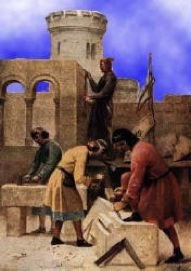 Freemasonry cannot be fully defined in a few sentences or pat answers. One common definition is that it is a system of morality, veiled in allegory or a story, and illustrated by symbols. While true, Freemasonry is much more.
Freemasonry cannot be fully defined in a few sentences or pat answers. One common definition is that it is a system of morality, veiled in allegory or a story, and illustrated by symbols. While true, Freemasonry is much more.
It is indeed a course of moral instruction that uses allegories & symbols to teach its lessons, but Freemasonry is also a society of men — a fraternity — providing us with deep insights into our spiritual natures.
Freemasonry uses symbols derived from stonemasonry & architecture, though not exclusively. Much of its symbolism is also taken from Biblical sources, especially those surrounding the building of King Solomon’s Temple (see, e.g., First Book of Kings, Chapter 5). In fact, our Lodge takes its name from Solomon’s father & predecessor on the throne, King David — perhaps the most spiritually complex hero of the Old Testament.
Freemasonry focuses on development of moral & ethical virtues and the building of character, with Truth being the guiding principle of our lives. Thus brotherhood & charity are natural outcomes, further defining who we are. We use proven methods to enhance the lives & minds of our members in a tangible way.
There is something spiritually profound about Freemasonry. It speaks to a hidden part of ourselves that responds with a deep reverence & respect. The deeper one takes his studies of the rites & symbols of Freemasonry, the richer his Masonic life becomes.
The Purpose of Freemasonry
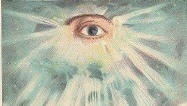 What is the purpose of Masonry? One of its most basic purposes is to make good men even better. We place emphasis on the individual man by strengthening his character, improving his moral & spiritual outlook, and broadening his mental horizons. We try to impress upon the minds of our members the principles of personal responsibility & morality, encouraging each member to practice in his daily life the lessons taught through symbolic ceremonies in the lodge. One of the universal doctrines of Freemasonry is the belief in the “Brotherhood of Man & Fatherhood of God.” The importance of this belief is established by each Mason as he practices the three principal tenets of Masonry: Brotherly Love, Relief, and Truth.
What is the purpose of Masonry? One of its most basic purposes is to make good men even better. We place emphasis on the individual man by strengthening his character, improving his moral & spiritual outlook, and broadening his mental horizons. We try to impress upon the minds of our members the principles of personal responsibility & morality, encouraging each member to practice in his daily life the lessons taught through symbolic ceremonies in the lodge. One of the universal doctrines of Freemasonry is the belief in the “Brotherhood of Man & Fatherhood of God.” The importance of this belief is established by each Mason as he practices the three principal tenets of Masonry: Brotherly Love, Relief, and Truth.
Masonry is also the custodian of a tradition of initiation. It is the duty of every Freemason to preserve and perpetuate this tradition for future ages. This is a heavy responsibility and should give pause to any who seek to make changes in the body of the Craft, except those with the highest motives and deepest understanding of the principles involved.
Origin of Freemasonry
How did Freemasonry originate? We are not sure when our Craft was born. We do know it goes far beyond written record and we believe it was not always called Freemasonry. It is obvious that some of the ancient mystery schools of Egypt, Greece and the Near East influenced the ceremonies we use today. These ceremonies were designed as tests, and admission was granted only to those who passed and were worthy of further instruction. Our ceremonies have some of the same elements, although of a less physical nature while still maintaining the spiritual form.
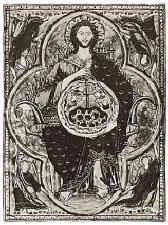 There are points of similarity between our Fraternity and the society founded by Pythagoras and the Fraternity of Hermes at Hermopolis in Egypt. We also find affinities in the great Mystery Schools of Isis & Osiris of Egypt (as referenced quite beautifully in Mozart’s “The Magic Flute” – W. A. Mozart being a brother of our Craft), together with the Dionysiac/Orphic & Eleusinian Mysteries of Greece, and the Mithraic Mysteries of ancient Rome.
There are points of similarity between our Fraternity and the society founded by Pythagoras and the Fraternity of Hermes at Hermopolis in Egypt. We also find affinities in the great Mystery Schools of Isis & Osiris of Egypt (as referenced quite beautifully in Mozart’s “The Magic Flute” – W. A. Mozart being a brother of our Craft), together with the Dionysiac/Orphic & Eleusinian Mysteries of Greece, and the Mithraic Mysteries of ancient Rome.
Other groups who have carried on like traditions include the Jewish eschatological sect of Essenes, from whom many believe John the Baptist emerged; the Roman Collegia of Artificers, an organization of builders that Marcus Vitruvius Pollio (under the Emperor Augustus) led in the first century; and the Comacine masters who flourished at the fall of the Roman Empire. The last group provides some link with the cathedral-building projects of the medieval ages that were virtual Bibles in stone. Our connection with these great schools of the past and other organizations is admittedly tenuous, but nevertheless a study of them yields deep insight into our own Fraternity. It is generally thought the medieval craft guilds gave rise to operative lodges and, in their turn, those Lodges evolved into Freemasonry as we know it today.
Transition from Operative to Speculative Masonry
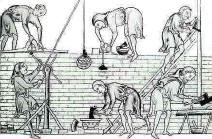 What is the difference between “Operative” & “Speculative” Masonry?Operative refers to the time in our history when Masons actually performed the physical labor of building. They were the very best at their craft and they kept secret their methods of building. Speculative refers to the period of time when men were accepted into the Craft as “non-operative” members. They were not physical builders, but were builders of character instead.
What is the difference between “Operative” & “Speculative” Masonry?Operative refers to the time in our history when Masons actually performed the physical labor of building. They were the very best at their craft and they kept secret their methods of building. Speculative refers to the period of time when men were accepted into the Craft as “non-operative” members. They were not physical builders, but were builders of character instead.
We are unable to accurately pinpoint the time when we transitioned from operative to speculative masonry. The change was gradual and probably stretched over a period of more than 50 years. It began early in the 1600s and may have begun with the acceptance of patrons into the operative Lodges. Other members, who were not interested in becoming stone masons, followed those patrons. Those who were admitted by consent of the operative masons became “Accepted Masons” (hence the term “Free & Accepted Masons,” and its acronym “F. & A.M.”). Membership was desired because of the spiritual, social & cultural advantages it conferred. During this time, our Craft grew rapidly.
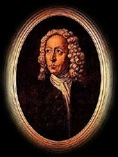 The decline of Gothic architecture and the reduced demand for great building projects lowered the number of skilled operative craftsmen needed to carry on construction after this initial period of amazing growth. If we had not become Speculative Masons, our Craft would have been faced with extinction. Many of the institutions of that day did pass into history but by becoming Speculative, our Craft continued to grow to a point never envisioned by its founders. Much of this growth can be attributed to formation of the Grand Lodge of England, which resulted when four old Lodges in London held a meeting at the Goose & Gridiron Tavern in June 1717. At this meeting, Anthony Sayer was elected Grand Master and from there, Masonry quickly spread over the entire developed world.
The decline of Gothic architecture and the reduced demand for great building projects lowered the number of skilled operative craftsmen needed to carry on construction after this initial period of amazing growth. If we had not become Speculative Masons, our Craft would have been faced with extinction. Many of the institutions of that day did pass into history but by becoming Speculative, our Craft continued to grow to a point never envisioned by its founders. Much of this growth can be attributed to formation of the Grand Lodge of England, which resulted when four old Lodges in London held a meeting at the Goose & Gridiron Tavern in June 1717. At this meeting, Anthony Sayer was elected Grand Master and from there, Masonry quickly spread over the entire developed world.
(Adapted from the Grand Lodge manual, “Initiated As An Entered Apprentice” — Fitting our Minds as Living Stones, Rev. 98-02.)
